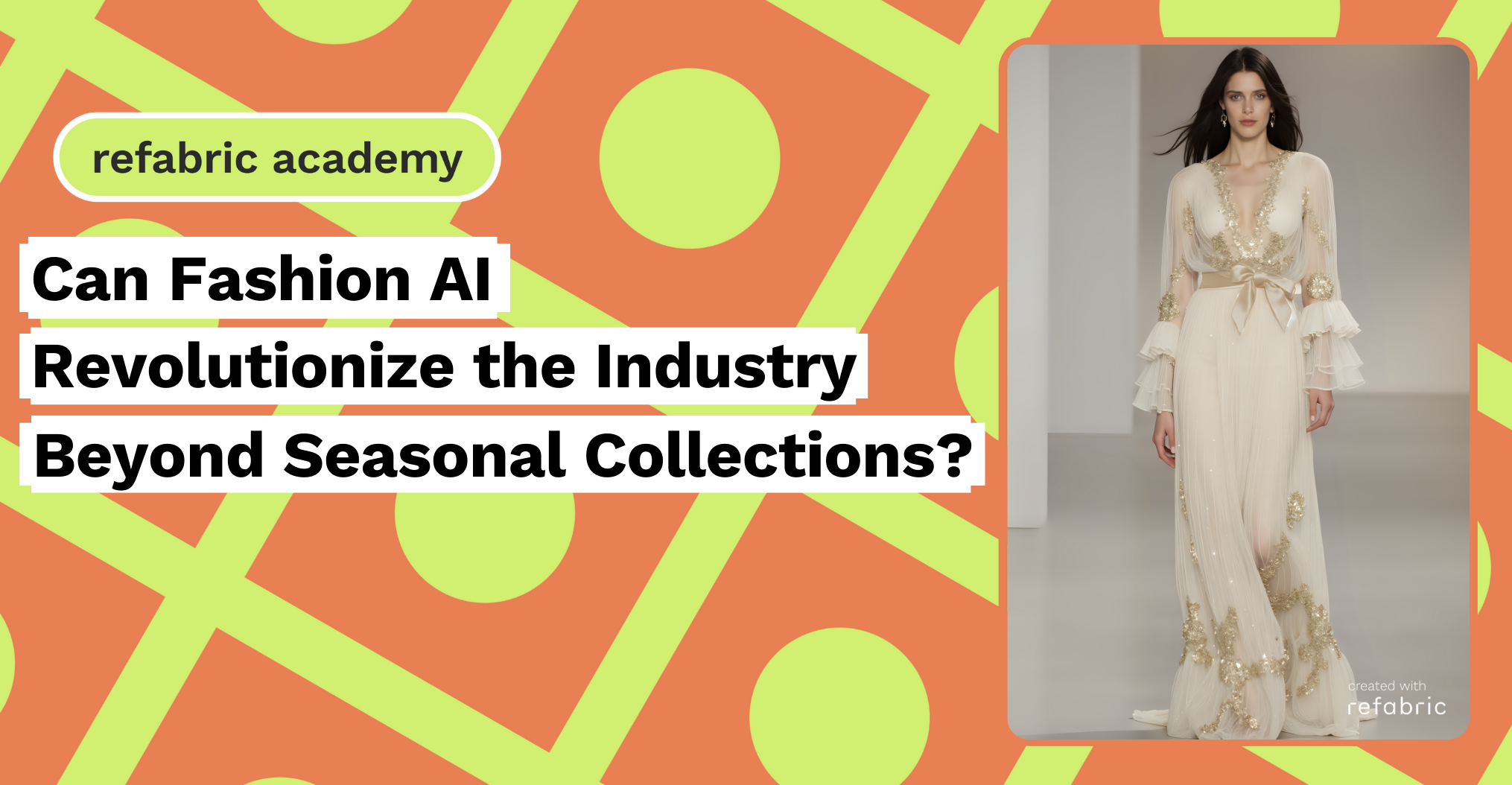Fashion AI is rapidly transforming the industry, challenging the long-standing reliance on seasonal collections, Spring/Summer and Fall/Winter that dictate when new trends emerge and old ones fade. As technology reshapes every aspect of fashion, could AI break these rigid cycles and introduce a new era of continuous, demand-driven design?
Breaking Free from the Traditional Calendar with Fashion AI
For decades, designers have worked within the constraints of seasonal collection cycles, forecasting trends months in advance and producing collections accordingly. However, this rigid model often leads to overproduction, unsold inventory, and a disconnection between what consumers want and what brands deliver. Fashion AI has the potential to challenge this outdated system by enabling real-time design innovation that aligns more closely with consumer demand.
Fashion AI can analyze vast amounts of data, from social media trends to historical sales patterns, to predict what styles will resonate with consumers. This capability allows brands to move beyond seasonal cycles and embrace an adaptive, on-demand approach to design.
- Real-Time Consumer Insights: Fashion AI tools can analyze browsing habits, purchase history, and even online sentiment to determine what consumers want in the moment, not six months down the line.
- Personalized Design Recommendations: Advanced AI models can suggest color palettes, silhouettes, and fabrics tailored to different consumer segments, ensuring brands stay ahead of the curve.
The Rise of On-Demand and AI-Generated Fashion
Fashion AI isn’t just influencing forecasting, it’s transforming the design process itself. Platforms powered by fashion AI can generate digital prototypes in minutes, allowing designers to experiment with endless variations before committing to production. This accelerates the creative process and allows brands to respond to trends as they happen, rather than being locked into predetermined seasonal releases.
Additionally, AI-powered manufacturing systems can facilitate made-to-order production, reducing excess inventory and catering to consumers who value exclusivity and customization. Luxury brands, in particular, stand to benefit from this shift, as they can offer hyper-personalized garments without the constraints of mass production.
While the adoption of fashion AI presents certain challenges, the benefits it offers are far-reaching and transformative. One of the most significant advantages is its potential to democratize design. With fashion AI, small and emerging brands now have the tools to compete with industry giants. By streamlining the design process with data-driven insights, AI in fashion design enables these smaller brands to create highly relevant, timely designs that resonate with their audience. This opens up a level playing field, where creativity and innovation are no longer restricted by resources or scale.
Moreover, far from hindering creativity, fashion AI enhances it. By accelerating the design process, fashion AI allows designers to experiment more freely with new ideas and quickly iterate on different concepts. The speed at which fashion AI can generate and adjust designs opens the door to continuous innovation, enabling brands to explore a vast range of styles, fabrics, and silhouettes in ways that were previously unimaginable. The combination of efficiency and creative freedom offered by fashion AI presents endless possibilities for designers, allowing them to push boundaries and rethink traditional fashion norms.
The Future: An AI-Enhanced Fashion Landscape
As AI in fashion design continues to evolve, the future of fashion may look radically different from today. Instead of rigid seasonal collections, we may see an industry defined by agility, sustainability, and hyper-personalized designs. Brands that embrace AI-driven trend forecasting and real-time production will not only reduce waste but also create a closer, more meaningful connection with their consumers.
The question is no longer if AI will transform fashion but how quickly brands will adapt to this revolutionary shift. By harnessing the power of AI, fashion can break free from the constraints of seasonal collections and step into an era of limitless creativity and responsiveness.
